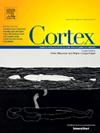遮挡对视觉工作记忆指针系统的影响。
IF 3.2
2区 心理学
Q1 BEHAVIORAL SCIENCES
引用次数: 0
摘要
为了访问其在线表示,视觉工作记忆(VWM)依赖于一个指针系统,该系统在环境中的对象与其内存表示之间创建对应关系。这个指针系统允许VWM使用一个称为更新的过程来修改它的表示。然而,当指针失效时,VWM触发一个称为重置的过程,在此过程中不再相关的表示和指针被替换。过去的研究使用对侧延迟活动(CDA)来区分更新和重置,发现重置后CDA振幅下降。本研究旨在通过四个实验来研究遮挡对VWM表征和重置过程的影响。实验1考察了被遮挡物是否会发生重置,并比较了被遮挡物与可见物的CDA。结果显示闭塞期间CDA振幅下降,但由于缺乏时间锁定的变化,不清楚当变化被闭塞时是否发生重置。为了更好地隔离重置过程,实验2使用了短暂的遮挡物出现(100毫秒),观察到CDA下降可能是由于ERP对突然刺激出现的反应。这种下降比重置CDA下降发生得更早,甚至在没有触发重置的情况下也会出现,这表明它可能是对短暂而突然出现的刺激的ERP反应。实验3进一步分离了这种ERP反应,证实了CDA的早期下降是对闭塞者开始和抵消的反应。实验4,包括没有闪烁以避免ERP反应的遮挡物,发现CDA下降表明重置可以随着推断的变化而发生。这些发现表明,VWM维持了被遮挡物体的表征,并可以根据推断的变化更新或重置这些表征,短暂的刺激会引发影响CDA振幅的ERP反应。本文章由计算机程序翻译,如有差异,请以英文原文为准。
The effect of occlusion on the visual working memory pointer-system
To access its online representations, visual working memory (VWM) relies on a pointer-system that creates correspondence between objects in the environment with their memory representations. This pointer-system allows VWM to modify its representations using a process called updating. When the pointer is invalidated, however, VWM triggers a process called resetting in which the no longer relevant representation and pointer are replaced. Past studies used the contralateral delay activity (CDA) to differentiate between updating and resetting and found that resetting is followed by a drop in the CDA amplitude. The current study aimed to investigate the effects of occlusion on VWM representations and the resetting process across four experiments. Experiment 1 examined whether resetting occurs with occluded changes and compared the CDA of occluded versus visible objects. The results indicated a decline in CDA amplitude during occlusion, but it was unclear if resetting occurred when the change was occluded due to the lack of time-locked changes. To better isolate the resetting process, Experiment 2 used a brief occluder appearances (100 ms) and observed a CDA drop likely due to an ERP response to the sudden stimulus appearance. This drop occurred earlier than the resetting CDA drop and appeared even in conditions that did not trigger resetting, which indicates that it might be an ERP response to the short and sudden appearance of a stimulus. Experiment 3 further isolated this ERP response, confirming the early CDA drop as a reaction to the occluder's onset and offset. Experiment 4, which included occluders that did not flash to avoid ERP responses, found a CDA drop indicating that resetting can occur with inferred changes. These findings suggest that VWM maintains representations of occluded objects, and can update or reset these representations based on inferred changes, with brief stimuli eliciting ERP responses that affect CDA amplitude.
求助全文
通过发布文献求助,成功后即可免费获取论文全文。
去求助
来源期刊

Cortex
医学-行为科学
CiteScore
7.00
自引率
5.60%
发文量
250
审稿时长
74 days
期刊介绍:
CORTEX is an international journal devoted to the study of cognition and of the relationship between the nervous system and mental processes, particularly as these are reflected in the behaviour of patients with acquired brain lesions, normal volunteers, children with typical and atypical development, and in the activation of brain regions and systems as recorded by functional neuroimaging techniques. It was founded in 1964 by Ennio De Renzi.
 求助内容:
求助内容: 应助结果提醒方式:
应助结果提醒方式:


